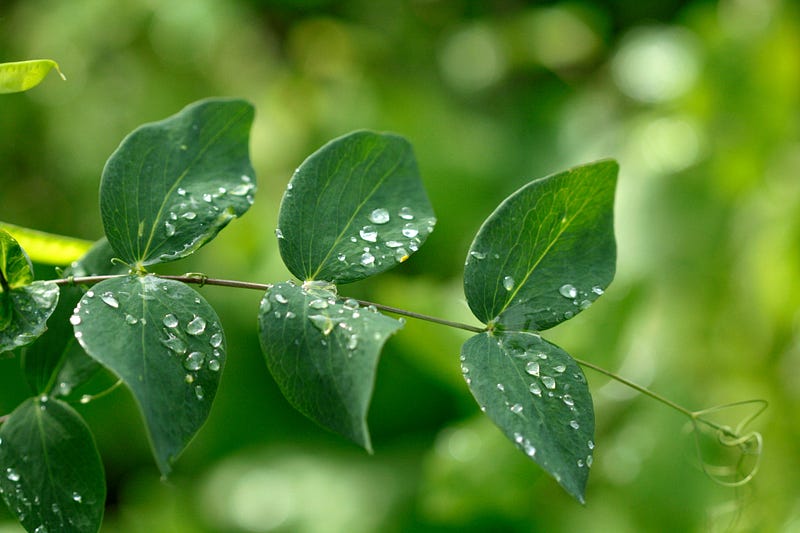Exploring the Mystery of Dew: A Child's Curiosity
Written on
Chapter 1: The Inquisitive Child
Children are inherently curious, often brimming with questions and an unyielding determination to find answers. One day, a young boy in his classroom gazed out the window, his mind bustling with thoughts. He raised his hand high, eager to catch the teacher’s attention.
“Why do the leaves have those little water droplets?” he inquired, pointing at a nearby tree. With a patient demeanor, the teacher began to explain the science behind fluid dynamics. The boy listened intently, his hand still raised, eager for more.
“Thank you for explaining how it happens,” he said, lowering his hand momentarily. But soon, he shot his hand back up. “But why does it happen?” he pressed.
The teacher knelt to his level, elaborating on the relationship between leaves and gravity, wondering if her explanation was sufficient. However, the boy tilted his head, persistent in his quest for understanding. “But why?” he repeated.
The teacher, caught off guard, shrugged her shoulders, a hint of confusion on her face. She then glanced up at the sky, searching for an answer beyond the scientific realm. Just then, the school bell rang, signaling recess. As the boy raced outside to join his friends, he noticed that the dew on the leaves had evaporated. “But why?” he thought again.
The realm of science delves into the mechanics of the natural world, seeking to explain how it operates and our connection to it. Yet, the deeper question of “why,” which the boy pondered, transcends the explanations provided by science alone. Such inquiries should ignite our curiosity and prompt us to explore other disciplines that might illuminate the purpose behind nature's phenomena.
What other fields do you think could help answer the boy’s pressing “why”?
Section 1.1: The Science of Dew
Understanding the formation of dew involves exploring atmospheric conditions and temperature variations. Dew forms as a result of condensation, where moisture in the air condenses on surfaces when temperatures drop.

This leads us to consider the natural world’s beauty and complexity.
Subsection 1.1.1: The Role of Curiosity in Learning
Curiosity is a powerful catalyst for learning. As children pose questions about their surroundings, they engage in a process that fosters deeper understanding and appreciation of nature.
Chapter 2: Beyond Science's Reach
The first video titled "Dew in the Morning - Why it Happens - School Education Video" delves into the scientific explanation of dew formation, helping to visualize the processes involved.
The second video, "How Does Dew Form?" further explores the phenomenon, offering insights into the environmental factors that contribute to dew's presence on leaves.
These resources can enhance our understanding, but they also invite us to reflect on the philosophical dimensions behind such natural occurrences. What insights can other disciplines provide to enrich our understanding of nature's mysteries?